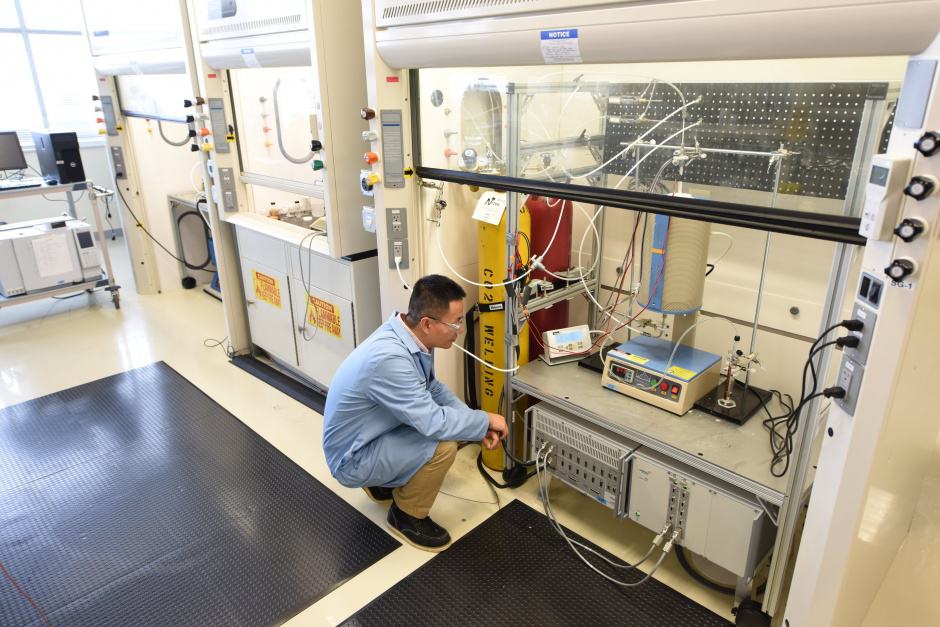The group’s fuel cell design, which is described in the journal Advanced Materials incorporates innovations in three components: the anode, the electrolyte and the fuel which allow the fuel cell to utilise about three times as much carbon as earlier direct carbon fuel cell (DCFC) designs.

The new fuel cells also operate at lower temperatures and showed higher maximum power densities than earlier DCFCs, according to INL materials engineer Dong Ding.
Whereas conventional hydrogen fuel cells generate electricity from the chemical reaction between pure hydrogen and oxygen, DCFCs can use any number of carbon-based resources for fuel, including coal, coke, tar, biomass and organic waste.
Because DCFCs make use of readily available fuels, they are potentially more efficient than conventional hydrogen fuel cells. "You can skip the energy-intensive step of producing hydrogen," Ding said.
Earlier DCFC designs have faced several drawbacks, not least the fact that they require temperatures of up to 900 degrees Celsius—which makes them less efficient and less durable and means they have to be constructed of expensive materials that can handle the heat. What’s more, early DCFC designs aren't able to effectively utilise the carbon fuel.
Ding and his colleagues addressed these challenges by designing a true direct carbon fuel cell that's capable of operating at lower temperatures — below 600 degrees Celsius. The fuel cell makes use of solid carbon, which is finely ground and injected via an airstream into the cell. The group tackled the need for high temperatures by developing an electrolyte using highly conductive materials—doped cerium oxide and carbonate. These materials maintain their performance under lower temperatures.
Next, they increased carbon utilisation by developing a 3D ceramic textile anode design that interlaces bundles of fibres together like a piece of cloth. The fibres themselves are hollow and porous. All of these features combine to maximise the amount of surface area that's available for a chemical reaction with the carbon fuel.
Finally, the researchers developed a composite fuel made from solid carbon and carbonate.
The molten carbonate carries the solid carbon into the hollow fibres and the pinholes of the anode, increasing the power density of the fuel cell.
The resulting fuel cell looks like a green, ceramic watch battery that's about as thick as a piece of construction paper. A larger square is 10cm on each side. The fuel cells can be stacked on top of one another depending on the application.
The technology has the potential for improved utilisation of carbon fuels, such as coal and biomass, because direct carbon fuel cells produce carbon dioxide without the mixture of other gases and particulates found in smoke from coal-fired power plants, for example. This makes it easier to implement carbon capture technologies, Ding said.

Report highlights significant impact of manufacturing on UK economy
I am not convinced that the High Value Manufacturing Centres do anything to improve the manufacturing processes - more to help produce products (using...